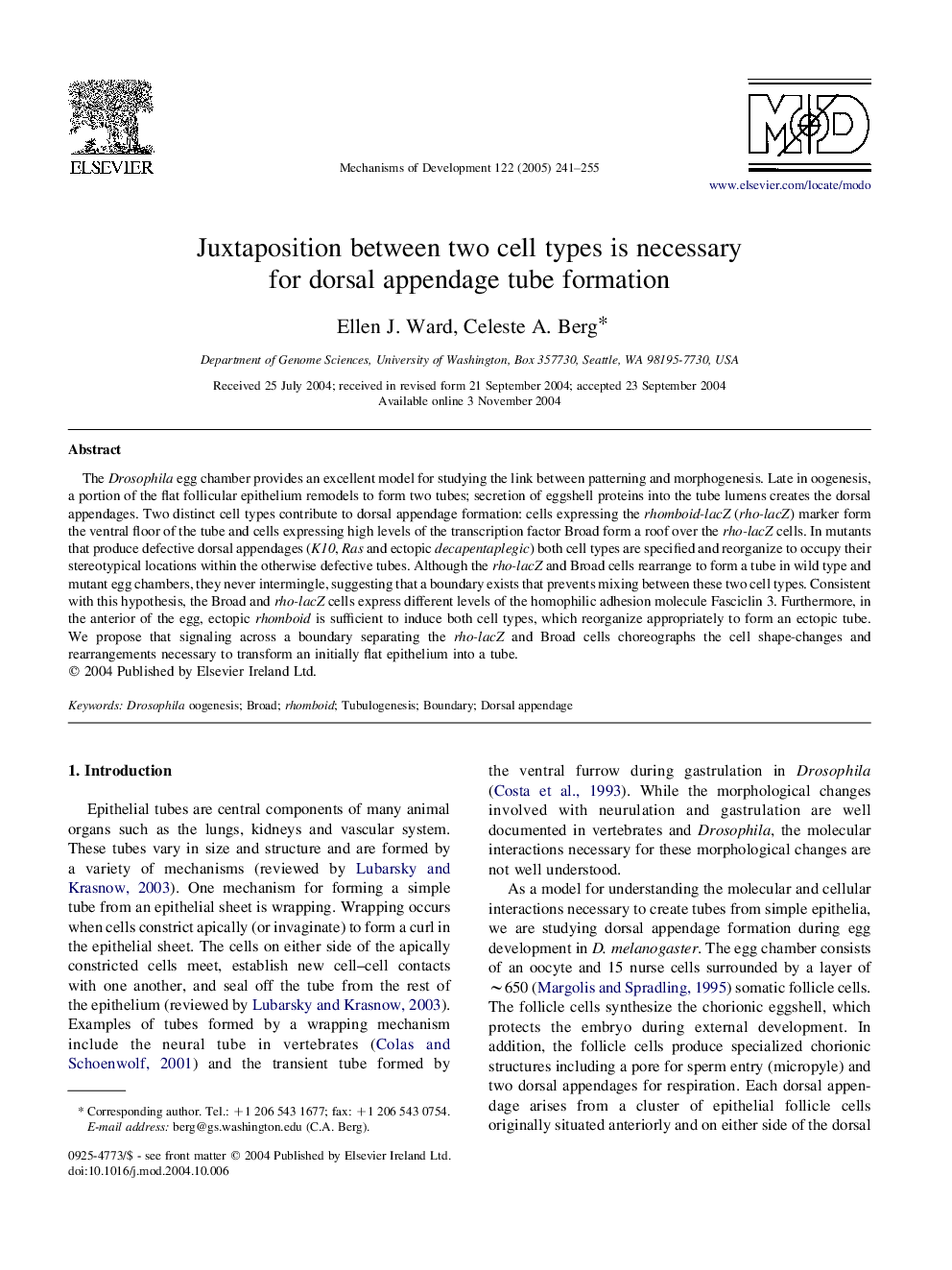| کد مقاله | کد نشریه | سال انتشار | مقاله انگلیسی | نسخه تمام متن |
|---|---|---|---|---|
| 9913698 | 1550645 | 2005 | 15 صفحه PDF | دانلود رایگان |
عنوان انگلیسی مقاله ISI
Juxtaposition between two cell types is necessary for dorsal appendage tube formation
دانلود مقاله + سفارش ترجمه
دانلود مقاله ISI انگلیسی
رایگان برای ایرانیان
کلمات کلیدی
موضوعات مرتبط
علوم زیستی و بیوفناوری
بیوشیمی، ژنتیک و زیست شناسی مولکولی
بیولوژی سلول
پیش نمایش صفحه اول مقاله

چکیده انگلیسی
The Drosophila egg chamber provides an excellent model for studying the link between patterning and morphogenesis. Late in oogenesis, a portion of the flat follicular epithelium remodels to form two tubes; secretion of eggshell proteins into the tube lumens creates the dorsal appendages. Two distinct cell types contribute to dorsal appendage formation: cells expressing the rhomboid-lacZ (rho-lacZ) marker form the ventral floor of the tube and cells expressing high levels of the transcription factor Broad form a roof over the rho-lacZ cells. In mutants that produce defective dorsal appendages (K10, Ras and ectopic decapentaplegic) both cell types are specified and reorganize to occupy their stereotypical locations within the otherwise defective tubes. Although the rho-lacZ and Broad cells rearrange to form a tube in wild type and mutant egg chambers, they never intermingle, suggesting that a boundary exists that prevents mixing between these two cell types. Consistent with this hypothesis, the Broad and rho-lacZ cells express different levels of the homophilic adhesion molecule Fasciclin 3. Furthermore, in the anterior of the egg, ectopic rhomboid is sufficient to induce both cell types, which reorganize appropriately to form an ectopic tube. We propose that signaling across a boundary separating the rho-lacZ and Broad cells choreographs the cell shape-changes and rearrangements necessary to transform an initially flat epithelium into a tube.
ناشر
Database: Elsevier - ScienceDirect (ساینس دایرکت)
Journal: Mechanisms of Development - Volume 122, Issue 2, February 2005, Pages 241-255
Journal: Mechanisms of Development - Volume 122, Issue 2, February 2005, Pages 241-255
نویسندگان
Ellen J. Ward, Celeste A. Berg,